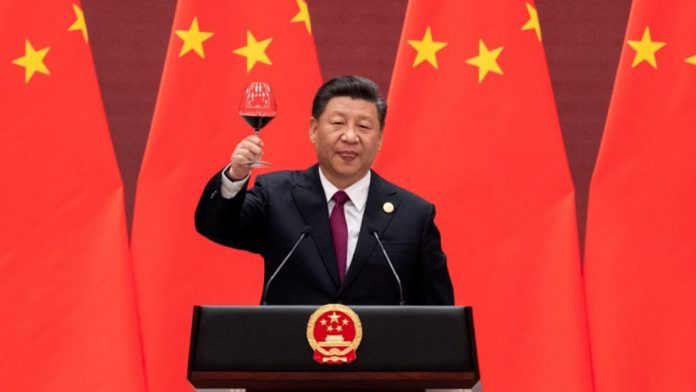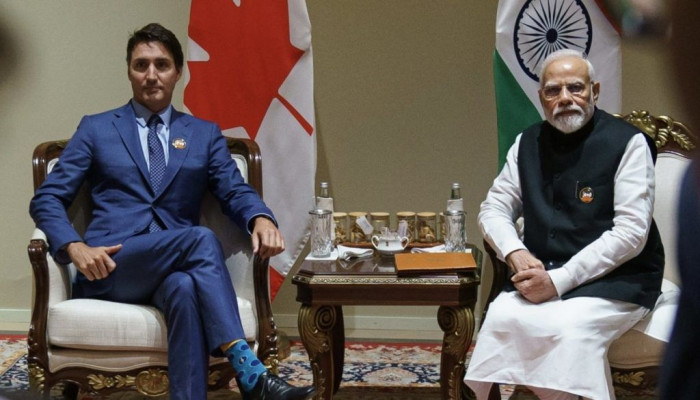Last week, amid rising concerns over the Chinese state's detention of thousands of Muslim ethnic minority groups, Chinese Premier Xi Jinping paid an unannounced visit to the North-Western region of Xinjiang. According to New York Times report, the four days visit aimed at projecting Xinjiang as a stable and united region under his administration. Moreover, Xi’s second visit, as a top leader, showed no sign of withdrawal from his popular ‘Xinjiang policy that has come under sharp criticism from Western nations. According to many human rights organizations and activists groups, Xi’s 2014 ‘Xinjiang policy’ set in motion drastic measures in the region- heavy surveillance, transfer of labourers to other parts of China, indoctrination, mass arrests and forceful identification of Uyghurs and other Muslim ethnic groups with the ideologies of the Chinese communist party. Furthermore, along the same path, Xi’s second visit emphasized the assimilation and Sinicization of the Uyghur and other minorities in the region.
But why is Xinjiang so important for Xi?
The Xinjiang Autonomous Uyghur Region (XUAR) is in the northwestern corner of China. It is the only Chinese region that encompasses a Muslim majority population. Moreover, Xinjiang’s population contains fifty-six ethnic groups in which Kazakhs and Uyghurs constitute 6% and 46% of their respective population. The Kazakhs and Uyghurs communities are ethnically Turkic and primarily speak their languages and follow their inherited beliefs and customs.
Xinjiang plays a significant role in China’s world hegemonic ambition. Xinjiang, which is predominately a desert region, encompasses 17% of China’s territory. In addition, the Westernmost region contains one-fifth of China’s natural gas and oil, 40% of its coal reserves and much of its gold reserves. Xinjiang also acts as a gateway to Europe, the Middle East, Afghanistan, Turkey, and Iran.
Or, in other words, Xinjiang’s rising geopolitical significance can be accredited to three prime reasons- China’s new policy focusing West, the region’s rich natural resources and the bordering nations especially those rich in natural resources such as Kazakhstan and the Russian Federation.
In addition, the region acts as a vital node in China’s One-Belt-One-Road program. In 2013, Xi Jinping announced the BRI initiative aimed at connecting Europe and Central Asia with China. And as per China’s Xinjiang policy, the region should act as a fulcrum of trade with central Asian nations. Moreover, Xinjiang should play a significant role in the Eurasian corridor as it’s home to six out of eight European- Sino railways.
However, Xinjiang’s proximity to nations like Afghanistan and Pakistan which, according to former US and NATO commander (General Nicholson) in Afghanistan, host numerous terrorist organizations, has proved to be a major concern for the Chinese leadership. Given the sensitivity of the region, the Chinese leadership has placed extreme importance on stabilizing and securing the region with stringent measures.
In 2014, the administration introduced the ‘Grid style management system’ that actively surveys even the most remote areas of the region. In 2017, the Population Registration program was introduced, which collected the DNA and Iris samples of all the population aged between 12 and 65, to form an Individual’s identification number in the name of medical reports. However, the kind of surveillance and security system, that China has on the people of Xinjiang, violates the standards of International Human Rights. Moreover, if the Human Rights Watch’s report is to be believed, China can be held for crime against humanity.
China’s Crimes against Humanity
Rome Statute of Inter Criminal Court defines crimes against humanity as serious specified acts that are intentionally committed as part of a systematic or widespread attack against any faction of the civilian population. Moreover, crimes against humanity are considered one of the gravest abuses under international humanitarian law.
Many reports have documented China’s specific crimes against humanity, deprivation of liberty and imprisonment, persecution of a specific religious or ethnic group, murder and universally recognized inhumane acts, towards Xinjiang’s ethnic minority groups. For instance, earlier this year, a cache of photographs and documents was leaked by a German-origin anthropologist ‘Adrian Zenz’ that shed new light on the brutal methods used by the Chinese authority on the Uyghur-Muslim community in so-called re-education camps.
The leaked records exposed the government’s plot to target the ethnic minorities, for practicing their culture and religion, in the name of state surveillance and vocational training centres. The record also suggested that most people in these camps have never been charged with a crime but have been targeted for reasons including attending mosques, travelling to nations that China considers sensitive such as Afghanistan and turkey, and sending Qur’anic verses. However, the Chinese administration dismissed the leaked documents as ‘concocted’ by anti-China forces in the west. Moreover, the Chinese administration claimed that Xinjiang’s issues are not even concerned with human rights or religion, as the west widely proclaims, but about combating separatism, violent terrorism, and de-radicalization.
According to government officials and experts, around two million Uyghurs and other Muslim minorities including Uzbeks and Kazakhs have been detained in the internment camps since April 2017. Furthermore, as per the reports of the New York Times, inmates of these internment camps go through years of interrogation and indoctrination, aimed at transforming them into groups of loyalists of the Chinese Communist Party. However, the Chinese widely dismisses such accusation and considers these camps as a hub to curb extremism, advocated under the United Nation plan of action to prevent extremism. Chinese authorities assert that these camps facilitate compliance with the principles of international resolutions for counterterrorism including the United Nations global terrorism strategy. Moreover, the leadership, during the second visit, gave credit to the deradicalization and counter-terrorism measures for maintaining stability in the region for the past four years.
Conclusion
Despite, Beijing’s constant attempt to portray the region as a beautiful homeland of diversity, the evidence of China’s draconian actions has been mounting up. Xinjiang Files 2019, Human Rights Watch Reports 2019, Leaked documents 2021, CNN reports 2020, The Chief Witness book by Sayaragul Sauytbay, and hundreds of survival testimonies hinting in the direction of China’s alleged ‘genocide’.








 OpinionExpress.In
OpinionExpress.In















Comments (0)